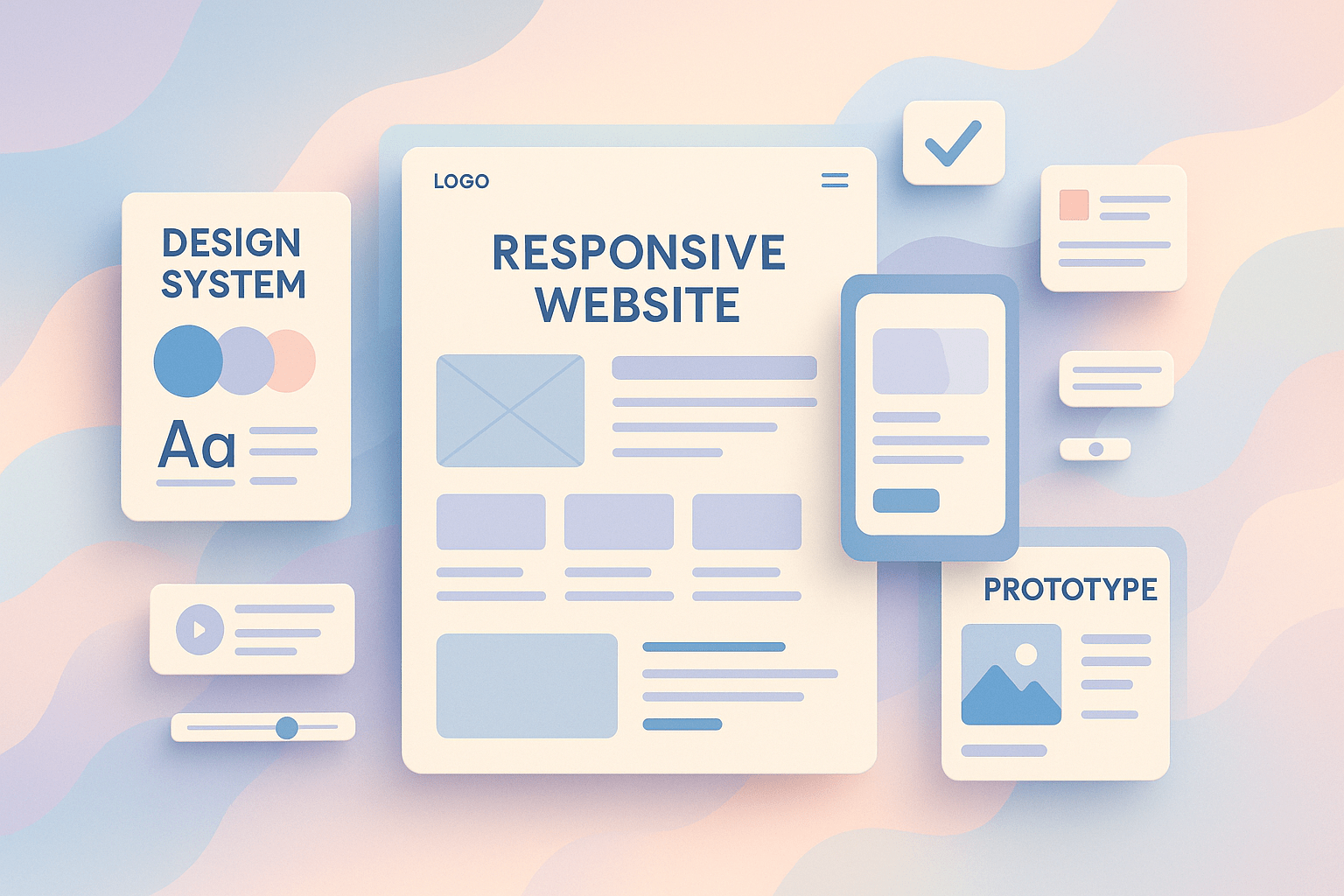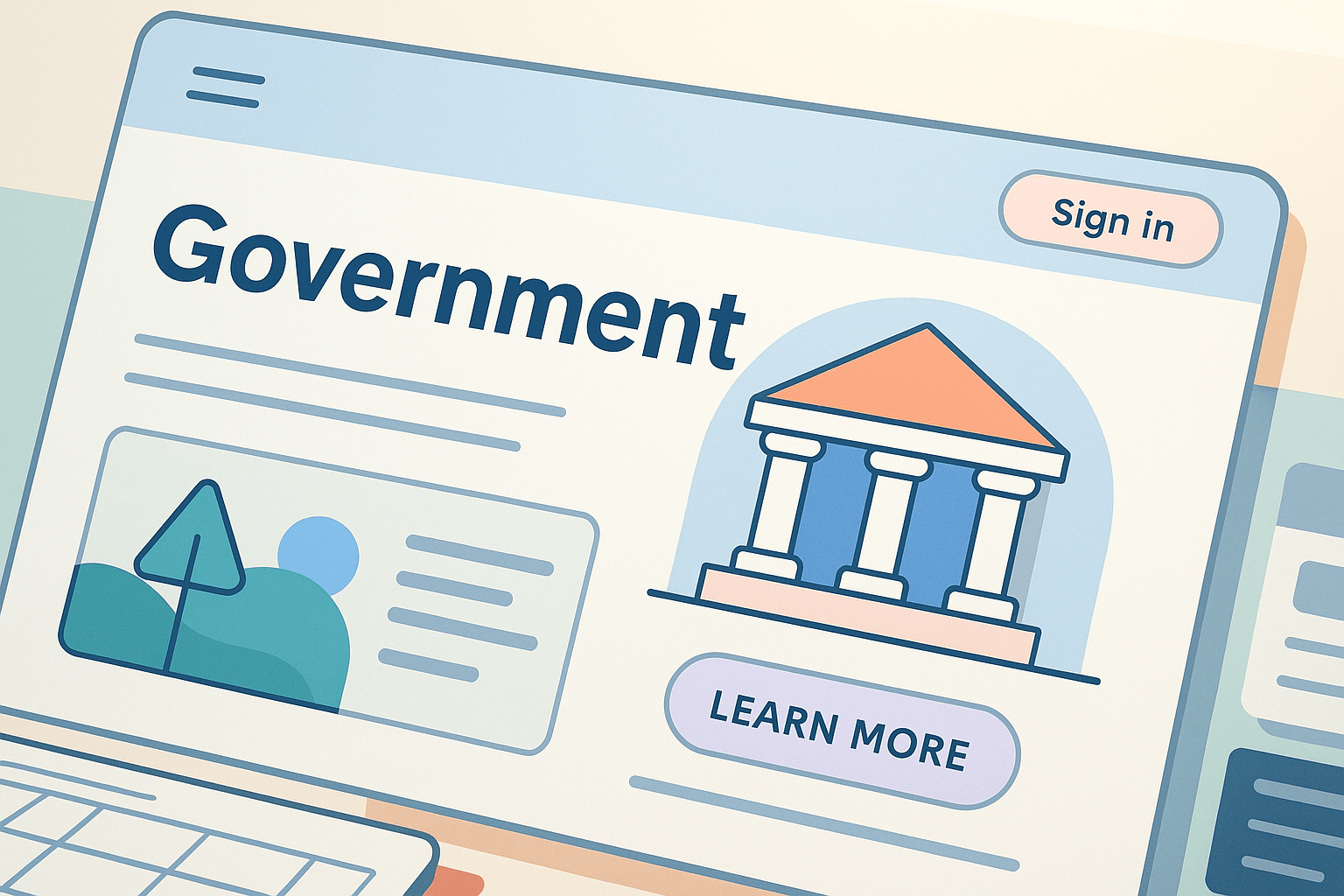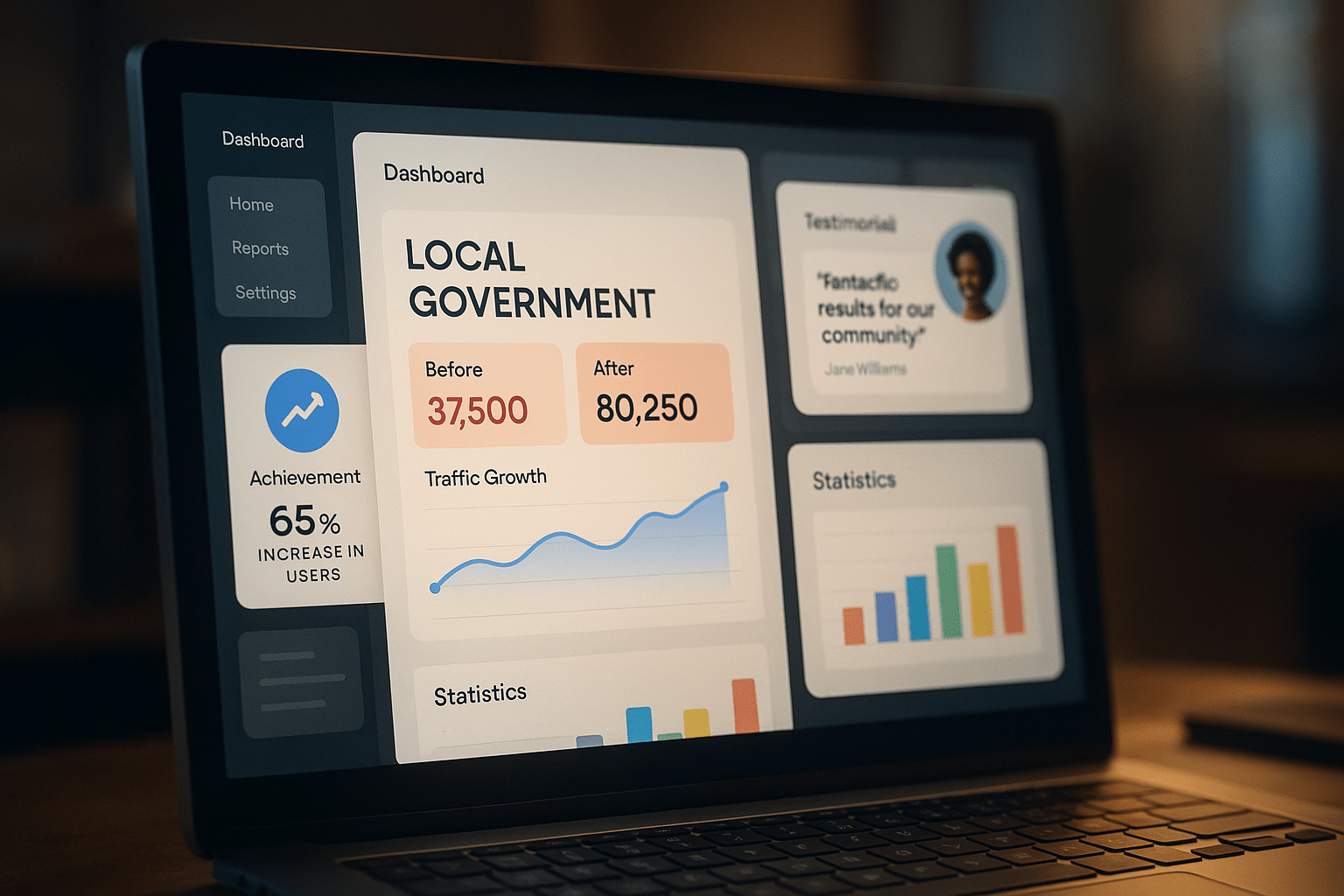Web Development Strategies Every Local Government Needs
by Design Delulu Editorial · September 16, 2025

Local governments face unique challenges in today's digital landscape. Citizens expect seamless online experiences when accessing government services, from paying property taxes to applying for permits. Yet many local government websites remain outdated, difficult to navigate, and frustrating to use. This creates a significant barrier between government agencies and the communities they serve.
Effective web development for local governments isn't just about having an online presence—it's about creating accessible, user-friendly platforms that enhance citizen engagement, streamline administrative processes, and build trust in government services. When done right, modern web development transforms how local governments operate and serve their constituents.

Why Local Governments Need Modern Web Development
Key Challenges Local Governments Face
Local governments encounter several critical obstacles that modern web development can address:
- Limited Digital Infrastructure: Many local government websites were built years ago using outdated technology. These legacy systems often lack mobile responsiveness, accessibility features, and integration capabilities that citizens now expect.
- Complex Service Delivery: Local governments manage dozens of different services—from business licensing to recreational program registration. Without proper digital organization, citizens struggle to find information or complete tasks efficiently.
- Transparency and Trust Issues: Citizens demand greater transparency from their local government. Poor website design and limited online functionality can create barriers to accessing public information, undermining trust and civic engagement.
- Resource Constraints: Local governments often operate with limited budgets and technical staff. This makes it challenging to maintain and update digital platforms without professional web development support.
- Compliance Requirements: Government websites must comply with accessibility standards (ADA), security regulations, and privacy laws. Non-compliance can result in legal issues and exclude citizens with disabilities from accessing services.
How Web Development Solves These Problems
Strategic web development addresses these challenges through:
- Responsive Design: Modern websites adapt seamlessly to any device, ensuring citizens can access services whether they're using a smartphone, tablet, or desktop computer
- Streamlined User Experience: Intuitive navigation and clear information architecture help citizens find what they need quickly
- Integrated Systems: Modern development connects various government databases and services, reducing redundancy and improving efficiency
- Enhanced Security: Professional development includes robust security measures to protect citizen data and government systems
- Accessibility Compliance: Proper development ensures websites meet ADA requirements and serve all citizens effectively

Essential Features of Web Development for Local Governments
Must-Have Tools and Design Elements
Online Service Portals: Citizens should be able to complete common tasks online, such as:
- Paying bills and taxes
- Applying for permits and licenses
- Scheduling appointments
- Submitting requests and complaints
- Accessing public records
Mobile-First Design: With over 60% of web traffic coming from mobile devices, local government websites must prioritize mobile user experience. This includes touch-friendly navigation, readable fonts, and fast loading times on cellular networks.
Search Functionality: Robust search capabilities help citizens quickly locate specific information, forms, or services without navigating through multiple pages.
Content Management Systems: User-friendly CMS platforms allow government staff to update content, post announcements, and manage information without technical expertise.
Multi-Language Support: Communities with diverse populations benefit from websites that offer content in multiple languages, ensuring all residents can access government services.
Real-World Examples
The City of Boston's website exemplifies effective government web development with its clean design, comprehensive service directory, and integrated 311 reporting system. Citizens can report issues, track requests, and access city services through a single, intuitive platform.
Similarly, the City of Austin, Texas, has implemented a user-centered design that prioritizes the most common citizen needs on its homepage, making it easy to pay bills, find parks, or access emergency information.

Common Mistakes to Avoid
Typical Pitfalls in Web Development for Local Governments
Overcomplicating Navigation: Government websites often mirror organizational structures rather than citizen needs. This creates confusing navigation that requires users to understand how government departments are organized internally.
Ignoring Mobile Users: Failing to optimize for mobile devices alienates a significant portion of users and can make websites unusable on smartphones and tablets.
Poor Content Organization: Burying important information behind multiple clicks or using government jargon that citizens don't understand creates unnecessary barriers to service access.
Neglecting Security Updates: Government websites handle sensitive citizen data and must maintain current security protocols. Failing to update systems regularly creates vulnerabilities that can be exploited by cybercriminals.
Lack of Testing: Launching websites without thorough testing across different devices, browsers, and user scenarios often results in broken functionality and poor user experiences.
How to Do Better
User-Centered Design: Base website structure on citizen needs rather than government organization. Conduct user research to understand how people actually interact with government services.
Regular Maintenance: Establish ongoing maintenance schedules for security updates, content reviews, and functionality testing.
Accessibility First: Design with accessibility in mind from the beginning rather than trying to retrofit compliance later.
Performance Optimization: Ensure fast loading times through image optimization, efficient coding, and reliable hosting solutions.
Continuous Improvement: Regularly gather user feedback and analytics data to identify areas for improvement and optimization.
SEO / Growth Best Practices
Optimization Tips Specific to Local Governments
Local SEO Optimization: Government websites should optimize for location-based searches. This includes:
- Including city and county names in page titles and meta descriptions
- Creating location-specific landing pages for different services
- Maintaining consistent NAP (Name, Address, Phone) information across all pages
- Claiming and optimizing Google My Business listings
Content Strategy:
Regularly publish helpful content that addresses common citizen questions and concerns. This might include:
- How-to guides for common government processes
- Updates on local projects and initiatives
- Seasonal reminders about taxes, permits, or services
- Emergency preparedness information
Technical SEO:
Government websites benefit from:
- Schema markup to help search engines understand content
- Fast loading speeds (under 3 seconds)
- Secure HTTPS connections
- XML sitemaps for better indexing
- Clean URL structures that are easy to understand
Leveraging Web Development for Visibility and Results
Modern web development enables local governments to:
- Improve Service Delivery Metrics: Track how citizens use online services to identify bottlenecks and improvement opportunities.
- Increase Citizen Engagement: Well-designed websites with interactive features encourage greater participation in local government activities and meetings.
- Reduce Administrative Burden: Online forms and automated processes free up staff time for more complex tasks that require human attention.
- Enhance Transparency: Easy-to-find budget information, meeting minutes, and public records build trust and accountability with constituents.
- Better Emergency Communication: Modern websites can quickly disseminate critical information during emergencies, natural disasters, or public safety situations.
Measuring Success
Effective web development for local governments should result in measurable improvements:
- Increased online service usage and reduced phone inquiries
- Higher citizen satisfaction scores
- Improved accessibility compliance ratings
- Faster task completion times for common services
- Greater public participation in local government activities
Conclusion
Web development for local governments is more than a technical upgrade—it's an investment in better citizen services and more efficient government operations. By focusing on user needs, accessibility, and modern functionality, local governments can create digital platforms that truly serve their communities.
The key to successful government web development lies in understanding that citizens don't want to navigate complex bureaucratic structures online any more than they do in person. They want simple, efficient ways to access the services they need and engage with their local government.
With proper planning, user-centered design, and ongoing maintenance, local governments can transform their digital presence from a source of frustration into a valuable tool that strengthens the connection between government and citizens.
Ready to improve your local government's digital presence with professional web development? Explore Design Delulu's Web Development Services to discover how we can help create user-friendly, accessible websites that serve your community better.